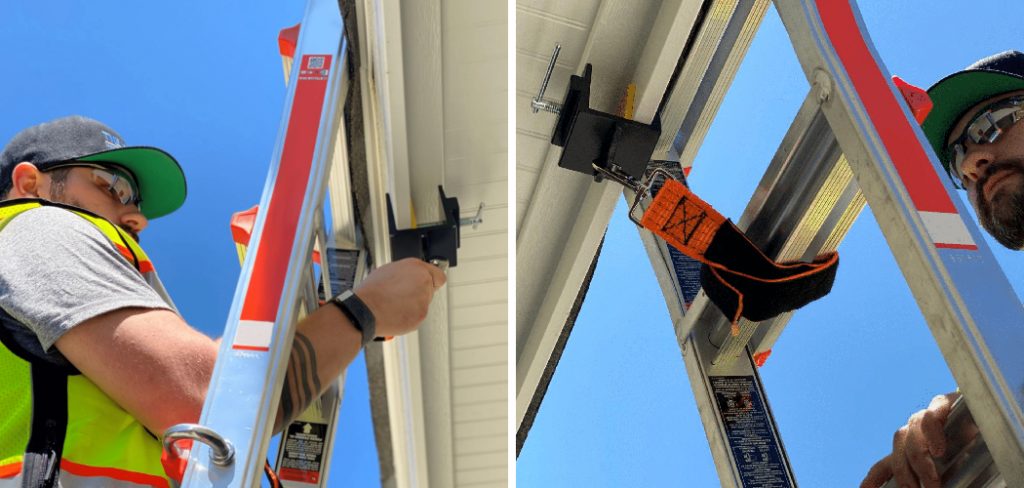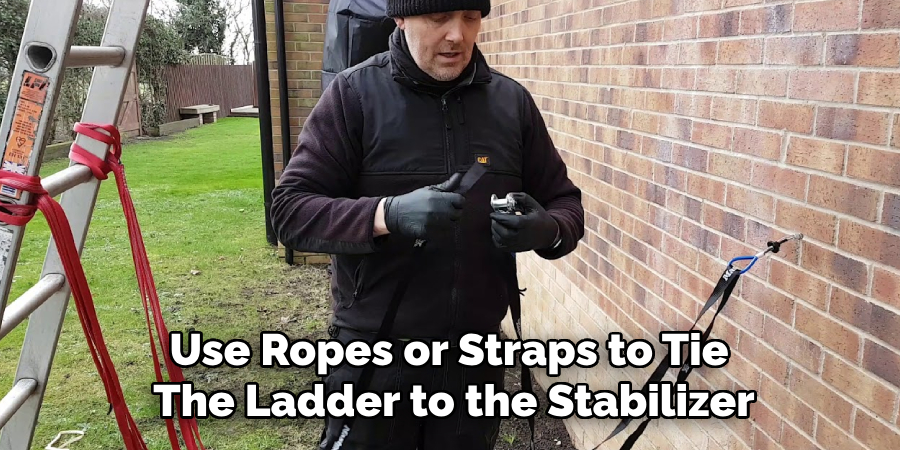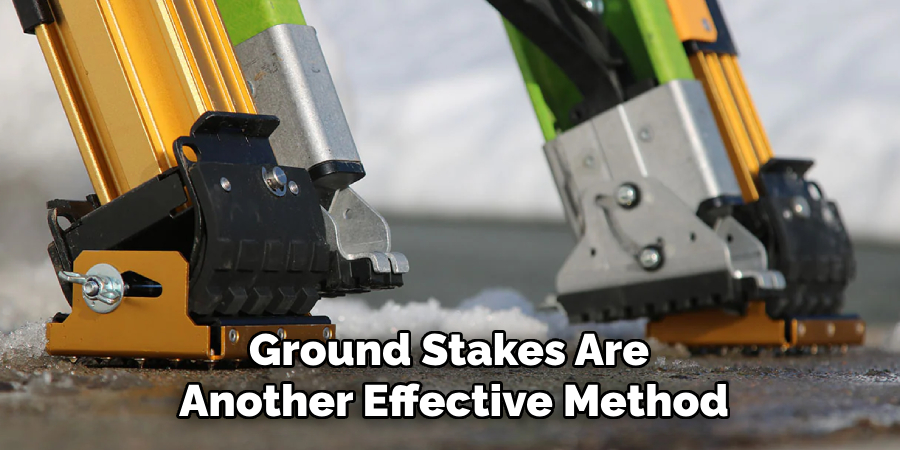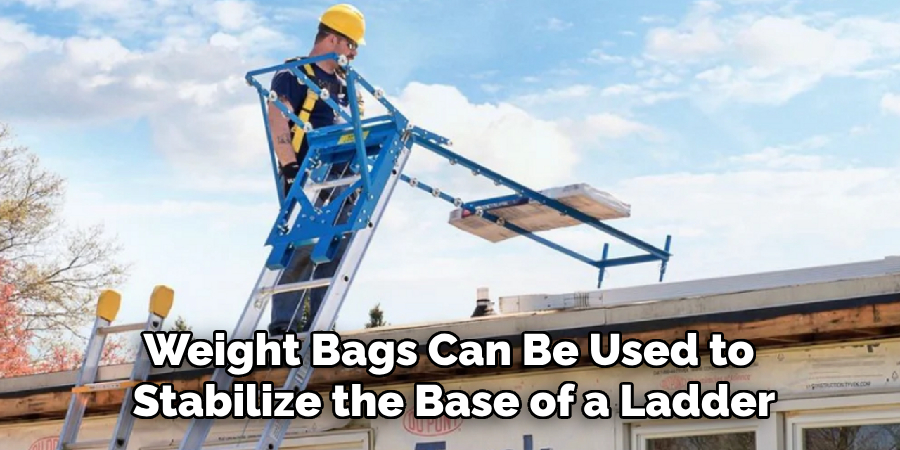Ensuring safety while using a ladder is paramount to preventing accidents and injuries. One of the essential practices for ladder safety is properly tying off the ladder to secure it in place. This precaution is especially crucial when working at heights or on uneven surfaces. Tying off a ladder involves anchoring it to a stable structure to prevent it from slipping or falling. This process requires the use of appropriate equipment, such as ropes, straps, or ladder stabilizers, and knowledge of the correct techniques to ensure maximum stability.

Understanding how to tie off a ladder properly can significantly reduce the risk of falls and provide a secure working environment. This guide will walk you through the steps and best practices for how to tie off a ladder for safety, highlighting the importance of proper setup, the types of equipment needed, and the specific methods to follow to ensure your safety and the safety of those around you.
Understanding Ladder Types
Before delving into the specifics of tying off a ladder, it is essential to understand the different types of ladders available and their respective uses. Each ladder type is designed for particular tasks and environments, and knowing which one to use can greatly enhance safety and efficiency. Here are some of the most common ladder types:
- Step Ladders: These ladders are self-supporting and do not require a structure to lean against. They are ideal for tasks at lower heights, such as painting a room or changing a light bulb.
- Extension Ladders: These ladders consist of two sections that slide to extend to various heights. They must be leaned against a stable surface and are suitable for tasks such as roof repairs or exterior painting.
- Multi-Position Ladders: Also known as articulated ladders, these are versatile and can be configured in multiple ways, including as a step ladder, extension ladder, or scaffold. They are useful for a variety of tasks around the home or job site.
- Platform Ladders: These ladders feature a wide, flat platform at the top, providing a stable standing area. They are commonly used in tasks requiring prolonged standing, such as window cleaning or installing ceiling fixtures.
- Telescoping Ladders: Compact and portable, these ladders can be extended rung by rung to the desired height. They are convenient for tasks requiring frequent transport and setup, like inspection work.
- Fixed Ladders: These are permanently attached to a structure, such as the side of a building or inside a silo. They are often used in industrial settings where regular access to certain heights is required.

10 Methods How to Tie off a Ladder for Safety
1. Using a Ladder Stabilizer
A ladder stabilizer, also known as a standoff, is an attachment that increases the ladder’s footprint, making it more stable. This method is particularly useful for extension ladders. To tie off a ladder with a stabilizer, first, attach the stabilizer to the top of the ladder according to the manufacturer’s instructions. Ensure that the stabilizer is firmly secured and the ladder is placed against a solid surface. Once the ladder is positioned, use ropes or straps to tie the ladder to the stabilizer, securing it to the structure. This method reduces lateral movement and distributes the weight more evenly, providing a stable base for working at heights.

2. Anchoring to a Fixed Object
Another effective method is anchoring the ladder to a fixed object. This involves securing the top or bottom of the ladder to a stable, immovable object such as a building, pole, or sturdy fence. To do this, place the ladder in the desired position and use a strong rope or strap to tie the ladder to the fixed object. Make sure the rope or strap is tightly secured and does not allow for any slack. This method is especially useful when working on uneven surfaces or in windy conditions, as it prevents the ladder from slipping or tipping over.
3. Using Ladder Hooks
Ladder hooks are specially designed attachments that hook over the ridge of a roof or other elevated surface, providing additional stability. To use ladder hooks, first, ensure that the ladder is the appropriate length and securely positioned. Attach the hooks to the top rung of the ladder and carefully lift the ladder so that the hooks rest over the edge of the roof or elevated surface. Once in place, tie the ladder to the hooks using a sturdy rope or strap. This method is particularly useful for roofing work, as it provides a secure anchor point and prevents the ladder from sliding.
4. Securing with Ground Stakes
Ground stakes are another effective method for tying off a ladder, especially on soft or uneven terrain. These stakes are driven into the ground and used to anchor the base of the ladder. To secure a ladder with ground stakes, position the ladder in the desired location and drive the stakes into the ground at an angle, ensuring they are deep enough to provide stability. Use ropes or straps to tie the ladder to the stakes, pulling the ladder slightly towards the stakes to eliminate any slack. This method is ideal for outdoor work, as it prevents the ladder from shifting or sinking into the ground.

5. Using a Ladder Strap System
A ladder strap system is a versatile method for securing a ladder. This system typically includes adjustable straps with hooks or buckles that can be attached to various anchor points. To use a ladder strap system, position the ladder in the desired location and attach the straps to the ladder and secure anchor points. These anchor points can include fixed objects, ground stakes, or other stable structures. Adjust the straps to ensure a tight, secure fit, and double-check that there is no slack. This method provides flexibility and can be used in a variety of settings, making it a reliable option for ensuring ladder stability.
6. Tying Off to Structural Beams
When working indoors or on construction sites, tying off a ladder to structural beams can provide excellent stability. To do this, position the ladder so that it rests against the beam, ensuring it is at the correct angle. Use a strong rope or strap to tie the ladder to the beam, wrapping it securely around both the ladder and the beam. Make sure the rope or strap is tight and there is no movement. This method is particularly useful in environments where other anchoring methods are not feasible, and it provides a solid, immovable anchor point for the ladder.
7. Using a Wall Bracket
Wall brackets are designed to secure ladders to walls, providing a stable and secure base. To use a wall bracket, first, install the bracket on a solid wall according to the manufacturer’s instructions. Position the ladder so that it rests within the bracket, ensuring it is at the correct angle. Use ropes or straps to tie the ladder to the bracket, making sure the connections are tight and secure. This method is ideal for indoor work or in areas where a stable wall is available, as it prevents the ladder from slipping or tipping.
8. Employing a Ladder Safety Cage
A ladder safety cage is an enclosure that surrounds the ladder, providing additional stability and protection. To use a safety cage, position the ladder within the cage and ensure it is at the correct angle. Use the cage’s built-in straps or additional ropes to tie the ladder to the cage, making sure all connections are secure. This method is particularly useful in industrial settings or when working at significant heights, as it provides an additional layer of safety and prevents the ladder from moving.
9. Using Weight Bags
Weight bags can be used to stabilize the base of a ladder, especially on flat surfaces. These bags are filled with heavy materials such as sand or gravel and placed at the base of the ladder to provide additional weight and stability. To use weight bags, position the ladder in the desired location and place the bags around the base, ensuring they are evenly distributed. Use ropes or straps to tie the ladder to the weight bags, making sure the connections are tight and secure. This method is particularly useful for indoor work or on hard surfaces where other anchoring methods are not feasible.

10. Creating a Temporary Anchor Point
In situations where a fixed anchor point is not available, creating a temporary anchor point can be an effective solution. This involves using heavy equipment, vehicles, or other stable objects as anchor points. To do this, position the ladder in the desired location and secure a strong rope or strap to the temporary anchor point. Tie the ladder to the anchor point, ensuring the connection is tight and secure. This method provides flexibility and can be used in a variety of settings, making it a reliable option for ensuring ladder stability in challenging environments.
Conclusion
Each of these methods provides a reliable way to tie off a ladder for safety, ensuring that the ladder remains stable and secure while in use. Whether working indoors or outdoors, on uneven terrain or flat surfaces, these techniques offer practical solutions to prevent accidents and ensure a safe working environment. Thanks for reading, and we hope this has given you some inspiration on how to tie off a ladder for safety!
About
Safety Fic is a distinguished figure in the world of Diy design, with a decade of expertise creating innovative and sustainable Diy solutions. His professional focus lies in merging traditional craftsmanship with modern manufacturing techniques, fostering designs that are both practical and environmentally conscious. As the author of diy, Safety Fic delves into the art and science of Safety Fic-making, inspiring artisans and industry professionals alike.
Education RMIT University
(Melbourne, Australia) Associate Degree in Design (Safety Fic) Focus on sustainable design, industry-driven projects, and practical craftsmanship. Gained hands-on experience with traditional and digital manufacturing tools, such as CAD and CNC software.
Nottingham Trent University
(United Kingdom) Bachelor’s in diyfastly.com and Product Design (Honors) Specialized in product design with a focus on blending creativity with production techniques. Participated in industry projects, working with companies like John Lewis and Vitsoe to gain real-world insights.
Publications and Impact
In diy, Safety Fic his insights on indoor design processes, materials, and strategies for efficient production. His writing bridges the gap between artisan knowledge and modern industry needs, making it a must-read for both budding designers and seasoned professionals.
